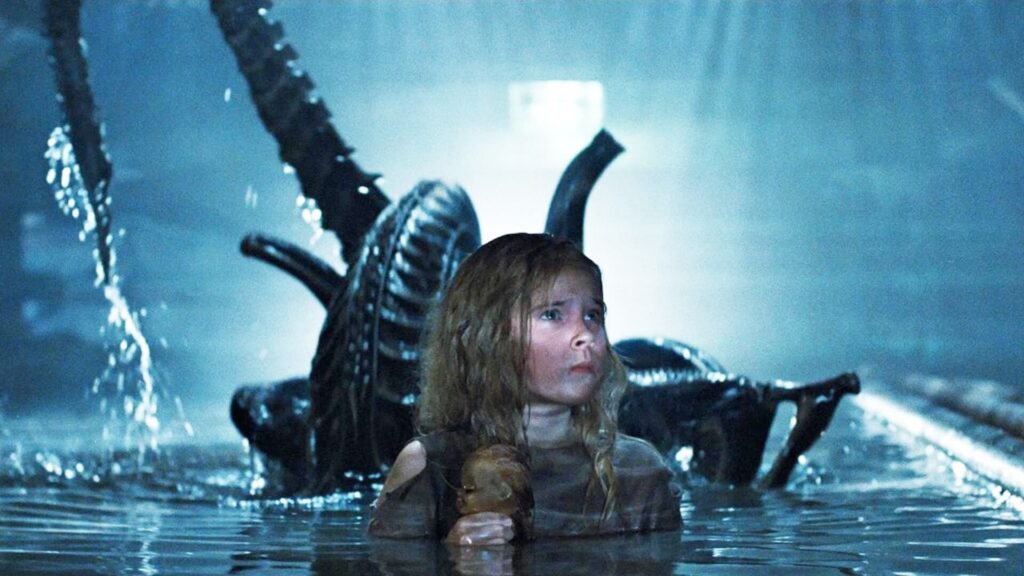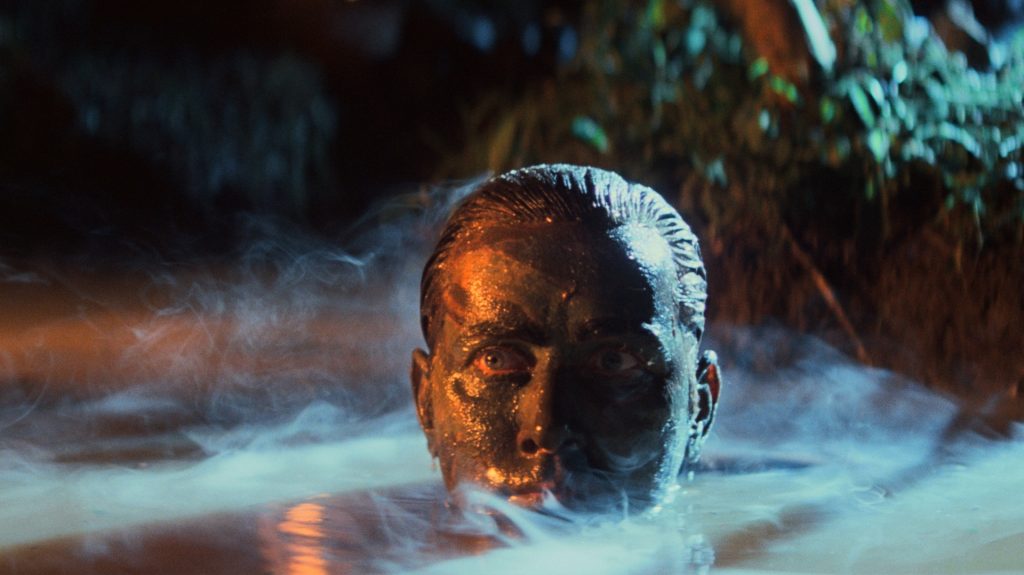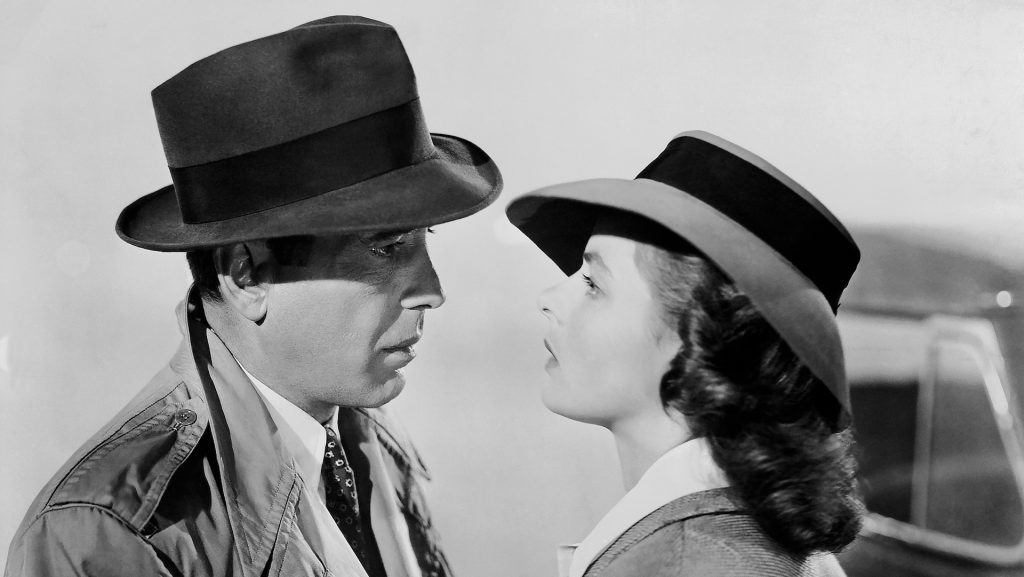Finding the right pacing in your screenplay can feel like an intricate dance—one misstep and you risk leaving your audience flat-footed. It’s a bittersweet truth, but for many novice screenwriters, the mention of “the reader” often evokes a cynical eye-roll. Is pleasing the reader really that important? Spoiler alert: it absolutely is! Think of all the gatekeepers who need to be charmed by your script; from interns and assistants to seasoned agents and producers. It’s not just a casual “read”; it’s a high-stakes audition for your screenplay to shine! If your pacing is off, even the most brilliant concept may be overlooked. So, grab your metaphorical metronome because we’re about to explore the five essential layers of screenplay pacing that will transform your script from drab to dazzling. Ready? Let’s dive in—your writing future depends on it! LEARN MORE
Pacing is the single most important element of your screenplay when it comes to the reading experience. A script that’s easier to read is almost always a more engaging, compelling, and pleasing script to the script reader.
Unfortunately, too many novice screenwriters have a cynical reaction when the reader is referenced as the one you need to win over. Whether you accept it or not, you need the read of your script to be swift and easy for the reader. And when we say reader, we’re not just talking about interns and assistants.
The term reader includes:
- Interns
- Assistants
- Competition/Fellowship Judges
- Professional Readers (which is what I was during my Sony Pictures days)
- Managers
- Agents
- Development Executives
- Financiers
- Distributors
- Producers
- Directors
- Actors
You want the read of your script to be the best possible experience for all of these types of industry insiders. They are the gatekeepers.
Yes, the concept, story, and characters have to be great. And, sure, sometimes a script can be perfectly written and still be rejected—usually because the project just isn’t what those industry insiders are looking for in potential acquisitions and future productions. But if you have a poorly paced screenplay—no matter how good the concept, story, and characters are—you’re shooting yourself in the foot by not providing a good reading experience to script readers.
So, for the good of your potential career, drop the negative attitude towards script aesthetics and pleasing the script reader. It’s necessary. It’s essential. You need to have great pacing in your scripts.
There are five layers of excellent screenplay pacing that you can focus on to accomplish those goals of writing a well-paced script.
5 Layers of Amazing Screenplay Pacing
Many screenwriters think good pacing is about writing unending action, suspense, laughs, or snappy dialogue, depending upon the type of script being written. But it’s more than that.
Screenwriting is about layers. Five to be exact.
These five layers are things that you can smooth out as you write (and rewrite) your script. Once you know what they are comprised of, you’ll discover that it is pretty simple to write a well-paced screenplay.
Know and understand that script readers (those many individuals mentioned above) will respond more to a well-paced script with a lesser concept/story/cast of characters than they would with a slightly stronger concept/story/cast of characters.
I’m talking about the immediate response. The first impression. Those in development will refute this notion, declaring that concept, story, and characters come first.
They won’t admit it, but what comes first is the read of the script. If the script isn’t a positive experience from page one and beyond, they won’t even get to the core of the concept, story, and characters. That’s a little Hollywood secret that you won’t hear from many.
Ideally, you want to have a well-paced script with an amazing concept, story, and cast of characters. That’s obvious. But you also need those aesthetics of the script to offer the best presentation possible.
With that in mind, here we offer five simple elements that you can focus on during your writing process to ensure that you’re writing an amazingly well-paced screenplay.
1. Broadstroke Scene Description
Screenplay scene descriptions shouldn’t have long paragraphs of text or lengthy descriptions. If you want to speed up the pacing of your script, this is where you start—with your scene description.
That’s the first layer you need to work on.
Eliminate unnecessary scene descriptions and trim important descriptions to the bare essentials to create stronger pacing. The more “ink” on the page, the longer it takes for the reader to read it, so cut out as much as you can.
If you have trouble shrinking scene descriptions down to size, use these three screenwriting devices to help you trim descriptions to the bone:
- Fragments
- Single-Sentence Blocks of Description
- Broad Strokes
Read More: How White Space Makes Your Screenplays Better
Fragments
Fragments offer you the freedom to get a visual across to the reader with minimum effort. Less really is more here:
- Dark and cold.
- Cold and wet.
- Hot and miserable.
Fragments are a screenwriter’s best friend. So use them as often as you can.
Single-Sentence Blocks of Scene Description
Single sentences that represent a single block of description help you communicate a visual beat. Remember that screenplays are ultimately meant to describe a visual medium (movies). So every block of scene description needs to communicate a single powerful visual that you hurl at the reader.
- This is what I want you to see.
- Now you see this.
- Now, this happens.
There’s a beat to it, right? But watch what happens when we put those three short sentences into one longer block of description. Watch how the rhythm changes as you read it:
This is what I want you to see. Now you see this. Now, this happens.
It’s the same information but it reads differently when you put it on one line together. It feels heavier. It also feels slower. If we change the text to represent a musical beat, you can feel the rhythmic differences:
- Boom Bada
- Boom Bada
- Boom
There’s a beat to it. But when you combine those beats by taking away that white space—that pause—you get a vastly different rhythmic experience:
Boombadaboombadaboom.
That second example has your mind reading it as more of a garbled sentence than a series of flowing beats. You’re forced to slow down to make sure that you read it right. That’s pacing.
Go through your script and space those paragraphs out to create single-sentence blocks of scene description. Use two sentences at the most, if need be, and you’ll accelerate your script’s pacing.
Broad Strokes
Details are for novels. If the scene description you’re writing isn’t vital to the story, don’t include it. Always focus on the broad strokes. Go through your script and see where you’ve gone into too much detail—then condense that section or remove it completely.
Here’s a quick example of how to cut down scene descriptions to just the broad strokes:
Overwritten scene:

Rewritten scene:

The rewrite embraces fragments, includes a single sentence block (in this case, accompanied by two single-word fragments), and focuses on the broad strokes of the visual the screenwriter wants the reader to envision. And it reads like a dream. All the information you need is there, and you didn’t even realize you’d read it.


‘Forrest Gump’ (1994)
2. Every Word of Dialogue Needs to Count
The first key to unlocking the mysteries of writing great dialogue is the lack of dialogue.
I’m not saying that you need to write a dialogue-less screenplay to pass the dialogue pacing layer test. That’s not what we’re talking about. Instead, we’re talking about making sure that every single word of dialogue counts, as far as moving the scene, the story, and the characters forward.
Writing actions and reactions into your scene description (following the scene description guidelines mentioned above) will actually help you write better dialogue.
Let me explain.
Actions speak louder than words. Yet, ironically, when we’re told to search the world around us for realistic dialogue, we quickly realize that if we are truly going to convey realistic communication, we must realize that we learn the emotions of others not by direct exchange of words, but by our outward actions and reactions.
If someone is angry, do they say:
“I’m angry and this is why…”
No. They sulk. They look away, they shake their head, they retreat, or they rage out.
If someone is sad, do they say:
“I’m sad and this is why…”
No. They sulk. They stare down to the ground, silent. They have tears in their eyes, they weep, they sob, or they run away.
There is nothing worse than reading or hearing on-the-nose dialogue that shoves meaning down the audience’s ears.
A lack of dialogue is often your best bet.
For the screenwriter trying to pepper their script with great dialogue, the best practice is less about injecting those great one-liners and speeches and more about cutting and cutting and cutting every line of dialogue that you can until you find that great one-liner, fragment, or phrase hiding amidst the noise—that diamond in the rough that encapsulates the moment at the core.
“You make me want to be a better man.”
“I’m gonna make him an offer he can’t refuse.”
“They call me Mr. Tibbs!”
“Show me the money!”
Make every word count.
Delete the rest.
Use your trimmed scene description to share actions to reactions that fill in the blanks without using dialogue as a crutch.
Read More: Three Easy Ways to Write GOOD Exposition in Your Scripts


‘Jerry Maguire’ (1996)
3. Scene Length and Relevance
This one is fairly simple.
- Get into scenes quickly.
- Get out of scenes quickly.
- Make sure each scene moves the story forward.
That’s it.
Scene Length
Do we need to see the character(s) walking into the location? Sometimes, yes. Most of the time, no.
Do we need to see the character(s) walking out of the location? Sometimes, yes. Most of the time, no.
Do we need characters talking for multiple pages about subjects and topics that aren’t relevant to the story or character arcs? No.
Scene Relevance
Do we need filler scenes that exist only to offer a laugh, a scare, or some action? No. Every scene should take the story forward.
Either the character(s) learns something, or the audience learns something. They can learn about plot points or character points—but the character(s) or audience must learn something that moves the story forward.
You accomplish all of this in your screenplay by reading through your script and asking yourself, “Does this part of the scene—or the scene altogether—need to be in this script to tell the story?”
You’ll be surprised by how many of your scenes (and moments within the scene) don’t need to be in the script. Take them out.


‘Aliens’ (1986)
4. Scene Placement and Editing
Go to the theater and watch some movies this weekend or find some on your streaming devices. First, choose ones that are similar in tone to what you are writing. Then, as you watch them, pay specific attention to the pacing through the editing and how that editing makes you feel as a viewer.
Watch a horror movie and see how the editor plays with your emotions with each scene, and then emulate that in your scripts to make the reader feel the same way.
Watch a hilarious comedy and see how the editor conveys various plants and playoffs for humor to make you laugh. Then, go make that reader laugh just as hard with your own.
Watch an action movie and see how the editor builds the thrills to an edge-of-your-seat climax, and then craft your own action sequences that take that reader inches and inches further to the edge of their seat with the turn of every page.
Movies have been saved by great editing and, in turn, some have been destroyed by bad editing.
The choices an editor makes are vital to the telling of a cinematic story. And it’s certainly not just about what is left on the cutting room floor. Instead, it’s about vital yet straightforward choices like:
- When to enter and leave a scene
- How much or how little dialogue is used
- What emotions are shown
- What points of view are utilized
- What transitions are made from scene to scene, and what those transitions are telling us
Screenwriters Need to Think Like Film Editors
No different than the cut of a film, a draft of a script can make or break the success of that material, no matter how great the story and concept are. Screenwriters need to think like editors and create a cinematic experience. Just because you’re only writing words—instead of cutting produced film—doesn’t mean that you’re not offering a cinematic experience. You are.
When readers read your scripts, you are tasked to allow them to see your story through their mind’s eye as quickly as a reel of film is projected onto a theater screen.
Therefore, you need to create an authentic cinematic experience for them, and you achieve that by writing like an editor edits.
Write visually.
Novice screenwriters often worry too much about the plot as opposed to cinematically communicating that plot. Instead, they outline the scenes, make sure the plot points are placed here and there, and then write scenes that lead the plot forward, often with dialogue that tells rather than shows. That doesn’t create engaging pacing.
This describes 98% of the scripts floating around Hollywood agencies, management companies, and development offices right now.
The top 1% deliver on offering a hybrid of great concepts, great stories, great characters, and great cinematic reads.
Intercut Different Scenes Together to Break Up Longer Scenes
If you have a more extended scene that needs to be featured, think like an editor and figure out how you can break up that scene by intercutting it with other scenes, jumping from location to location, from this character to that, etc.
Go from one to the other, back and forth, rather than just offering a bland collection of scenes built up on top of each other. But, unfortunately, that’s not how most great films feel when we’re in the theater. Why? Because they’ve been edited to convey a certain energy, flow, and style.
Don’t Edit from Plot, Edit from Instinct
As mentioned before, too many screenwriters focus on plotting the script out as they write and edit. Instead, trust your instincts to create that cinematic “cut” of your script. What do you feel are the best cinematic choices when moving from one scene to the next? What works best visually?
The problem with supposed screenwriting “formulas for success”—Save the Cat, etc.—is that they breed formulaic screenplays. They teach you to write and edit from plot rather than from instinct. You’ve been watching movies and television your whole life. Trust this now-embedded visual storytelling instinct to offer answers to the sole question: “What do we see next?”
What Do We See Next?
It’s not about going to the outline to see what comes next in the story. It’s not about following some formula or structure. Writing like an editor edits is all about what we see next and why.
Don’t be afraid to end a scene with a character gazing at the murky water and then open the next scene on a close-up of that or another character washing their bloodied hands in the sink.
Don’t be afraid to end a scene with a character threatening another in a violent rage and then open the next scene on that victim being discovered as a corpse floating in a lake.
Both examples that would otherwise be simple but effective film editing choices are types of visual elements that screenwriters should embrace within each and every page of their script and every transition between scenes.
It’s All About Rhythm
The great editor Walter Murch (Apocalypse Now) said it best when talking about editing: “It’s all about rhythm.”
Some will say that great editing is seamless and unnoticeable. When we’re talking about pacing, that rings true. For screenwriting, the same applies. However, sometimes following the rhythm of an emotional moment forces us to make transitions to scenes in a creative manner.
Some emotional scenes play better if you jarringly cut to the next scene.
If someone is agitated after an argument with another character, the next scene could open with them back home, tearing apart their apartment. We don’t have to see them leave the previous location, walk home, enter, and then begin to wreak havoc. Instead, we go from the emotion of the argument to the emotion of their reaction sometime later.
Screenwriters can follow the emotional pacing of the story and the character from scene to scene by making the right choices that offer cinematic transitions for the reader to comprehend easily.


‘Apocalypse Now’ (1979)
5. Conflict, Conflict, Conflict
Conflict is everything in an engaging, compelling, and well-paced script.
And conflict needs to be central to the four other core elements we’ve discussed above. There needs to be:
- Constant conflict is present in your scene description.
- Constant conflict is present in the dialogue exchange between characters.
- Constant conflict is present in each scene you write.
- Constant conflict is generated by the way you edit your scene together.
This is the last layer that you need to spread throughout the script. When you look at your scene description, dialogue, scenes, and how you edit the scenes, you need to insert building conflict that your characters must face.
And that conflict can come in different forms:
- Characters facing an outside conflict.
- Characters facing an inside conflict.
- Conflict between characters (physical or through dialogue).
- More and more hurdles that characters need to overcome.
Ensure that all of your scene descriptions, dialogue, scenes, and how you edit those scenes showcase conflict that builds and builds until the exciting, dramatic, horrific, or hilarious climax of your script.
—
These five core elements are the five layers of your screenplay that you can work on to create outstanding pacing. If you write well-paced scripts, you’ll be far ahead of the pack. Trust me.
Ken Miyamoto has worked in the film industry for nearly two decades, most notably as a studio liaison for Sony Studios and then as a script reader and story analyst for Sony Pictures.
He has many studio meetings under his belt as a produced screenwriter, meeting with the likes of Sony, Dreamworks, Universal, Disney, Warner Brothers, as well as many production and management companies. He has had a previous development deal with Lionsgate, as well as multiple writing assignments, including the produced miniseries Blackout, starring Anne Heche, Sean Patrick Flanery, Billy Zane, James Brolin, Haylie Duff, Brian Bloom, Eric La Salle, and Bruce Boxleitner, and the feature thriller Hunter’s Creed starring Duane “Dog the Bounty Hunter” Chapman, Wesley Truman Daniel, Mickey O’Sullivan, John Victor Allen, and James Errico. Follow Ken on Twitter @KenMovies
For all the latest ScreenCraft news and updates, follow us on Twitter, Facebook, and Instagram.


